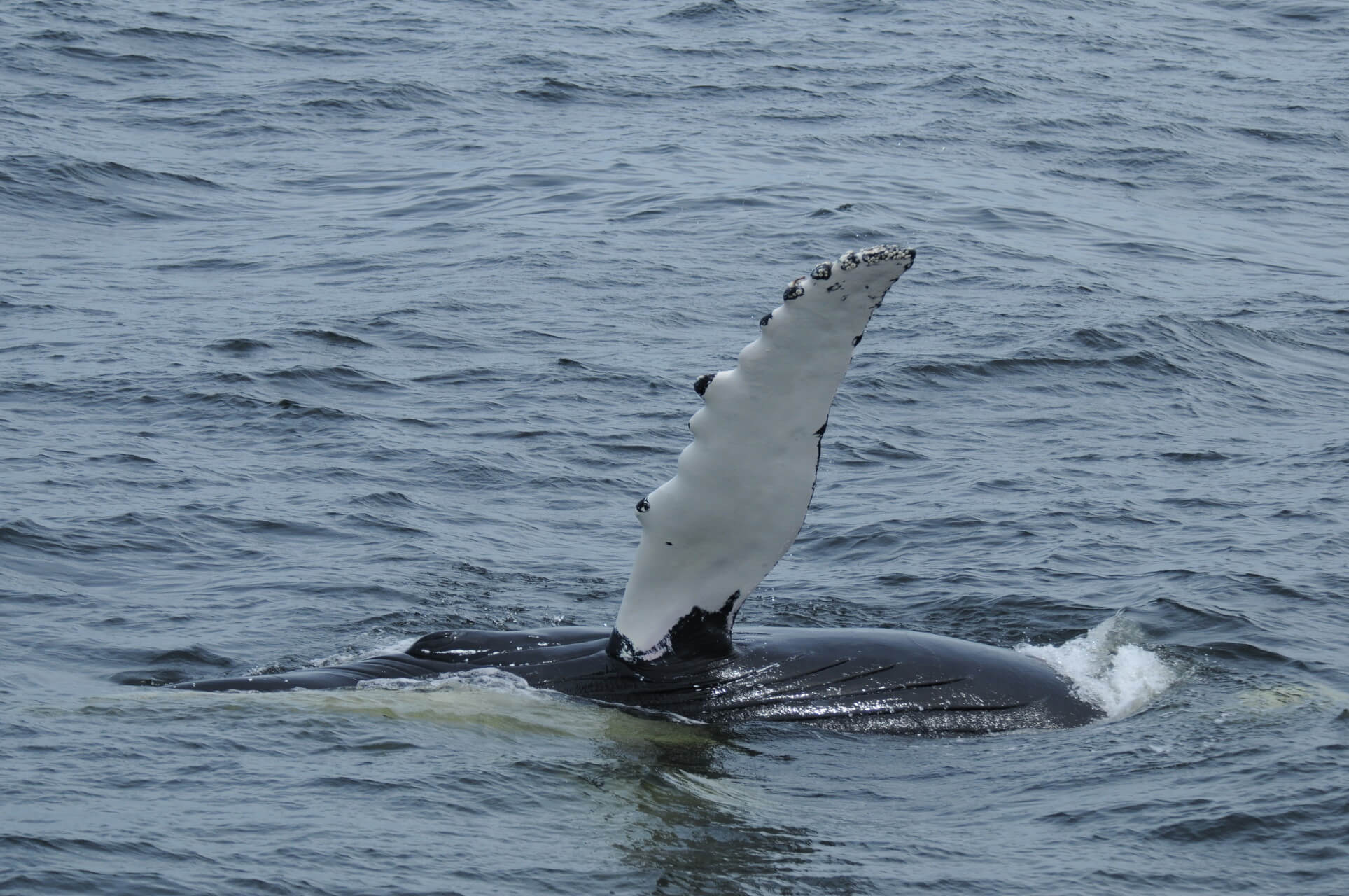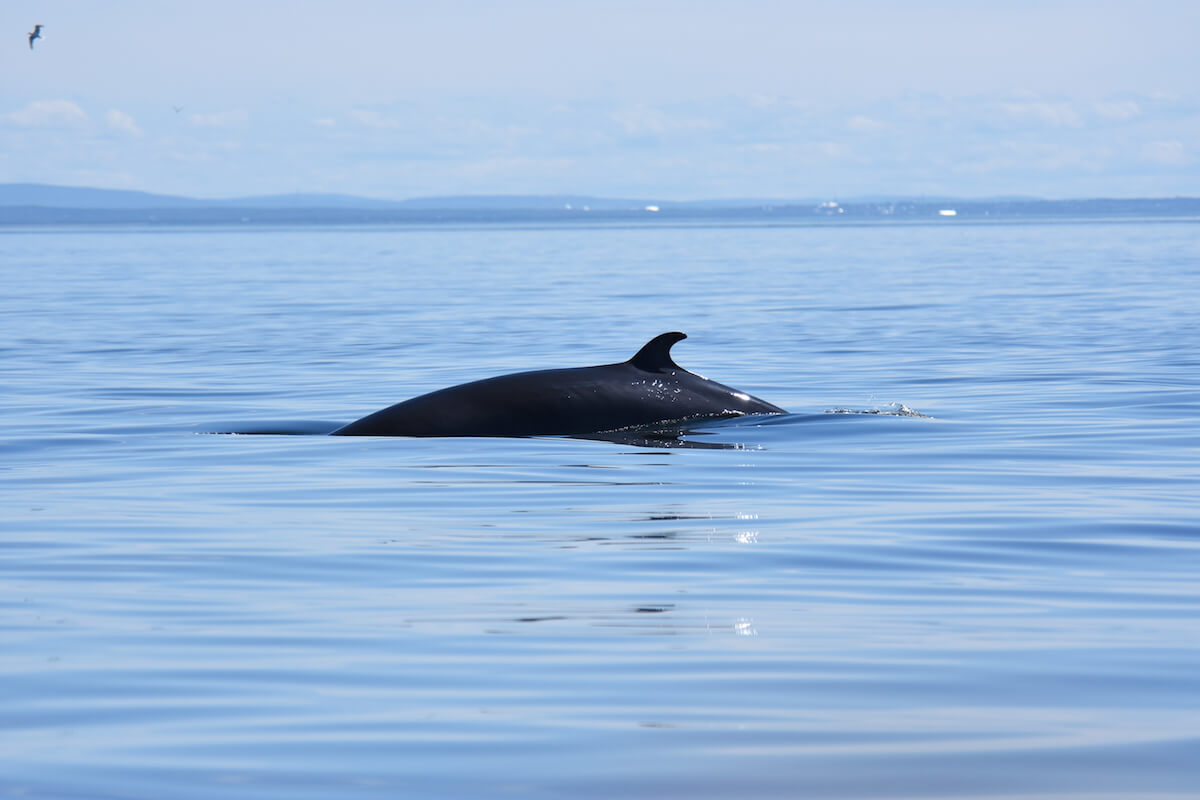It is difficult to determine with certainty the altruistic character of a given animal behaviour. Indeed, guessing their motive is no easy task! However, researchers have certainly documented what appears to be manifestations of altruism in cetaceans. Research provides insight into an aspect of the world of whales that is still poorly known, but oh-so fascinating!
Humpback whales in the spotlight
An article authored by several collaborators and published in the journal Marine Mammal Science analyzes over one hundred interactions between humpback whales and killer whales that took place between 1951 and 2012. Humpback whales have been observed on numerous occasions displaying intimidating and even attacking behaviour toward killer whales! These intimidation behaviours, also called predator harassment, have been recorded in a number of animal species. Such behaviour consists of the normally prey species approaching, harassing or attacking the predator. Additionally, it often emits calls to alert its fellow humpbacks.
In the case of humpbacks, the majority of these interactions took place with killer whales whose diet includes marine mammals, as opposed to those that feed exclusively on fish. What’s more, most often it was the humpbacks that approached the killer whales while the latter were busy hunting or feeding. More than half of these approaches were accompanied by intimidation behaviour toward these predators.
Surprisingly, humpback whales not only intervene when one of their fellow whales is the target of an attack by killer whales, but also when other species are in danger. Researchers believe that these cetaceans react to attack calls from the killer whales and are unaware as to what species the latter’s prey belong to. However, humpbacks continue to harass killer whales even after they have realized that targeted prey is not a member of their own species. In their article, the authors identify ten species that have benefited from the intimidation behaviour of humpback whales, namely one species of fish, six species of pinnipeds and three species of cetaceans. When killer whales pursue humpbacks, they only attack calves.
What exactly is altruism?
The Larousse dictionary defines altruism as the ability to care for the welfare of others in a selfless manner. In Le Robert, altruism is described as being the opposite of selfishness, namely the “inclination to be interested and devoted to others.” For example, performing an act of assistance without expecting anything in return, that’s altruism!
Is altruism in a species other than Homo sapiens defined the same way? In biology, the theory of evolution teaches us that altruism is when a given individual’s behaviour is potentially costly to itself, but produces a benefit for another individual. The cost is the negative impact of this behaviour on reproductive success, i.e. the ability of this individual to produce offspring that can later reproduce in turn. The altruistic individual can thus reduce its own chances of transmitting its genetic material to the next generation. On the other hand, the individual benefiting from the altruistic act could see its own reproductive success increase!
Moreover, altruism is considered a conscious act in humans, while this is not necessarily the case in other species that exhibit such behaviour.
Altruism: rare or common?
Rather surprisingly, several species demonstrate altruism! The workers of some insect species, such as ants and bees, are sterile and devote themselves to the queen and her offspring. Their role is to look after the larvae, forage for food and take care of the nest. The case of these workers is an extreme example of altruism, as the queen will produce all the offspring while the worker insects will not have any. Another species that shows altruism is the vampire bat. These animals cannot survive much longer than two days without feeding on blood. However, every night, members of the group having found nothing to eat return “empty-handed.” This does not mean that these unlucky individuals will starve, since their more successful counterparts may regurgitate a small amount of blood to share with them.
Altruism is also demonstrated by the individuals of certain species of birds that help a mated pair raise their young. Helper birds expend energy assisting in the feeding of offspring, and put themselves in a more vulnerable position when they alert the nestlings’ parents to the presence of a predator in the vicinity. Similarly, vervet monkeys that have spotted a predator will emit warning cries to members of their own species, which in turn increases the risk that they themselves will be detected. All of these examples describe actions that compromise the reproductive success of the giver while benefiting the receiver!
Altruism and evolution
For humpback whales, these bullying behaviours toward killer whales come at a cost. The distance travelled to reach the killer whales is sometimes considerable, and the duration of the interaction may be significant, i.e. up to several hours. They must stop whatever they are doing, whether resting, socializing or eating, in oder to intervene. Their firm response also requires a lot of energy. So why do they do it?
Of course, science puts forward different theories that can help explain the evolution of altruistic behaviour in animals. This is the case of the theory of kin selection, where an individual comes to the aid exclusively of individuals that are related, and which therefore have a similar genetic makeup to its own. It thus increases the chances that its family member will pass its genetic material onto the next generation. As for reciprocity, it can be found in species that live in stable social units. An individual that helps a member of its own species can thus expect to receive help in return in the future. These two theories could explain why humpback whales come to the rescue of their congeners.
However, when it comes to help offered by one species to another, these two theories do not hold water. Do humpback whales act like this out of habit, since they have always done so for their own kind? Some authors refer to this phenomenon as “spillover,” i.e. a behaviour that is common between members of the same species and that extends to different species. This altruism could therefore be unintentional. Alternatively, could it be that this behaviour stems from a feeling of compassion? According to researchers, this is a question that will need to be addressed through further research!
Stay tuned: Other cetacean behaviours resembling altruism in cetaceans will be explored in the next article!







